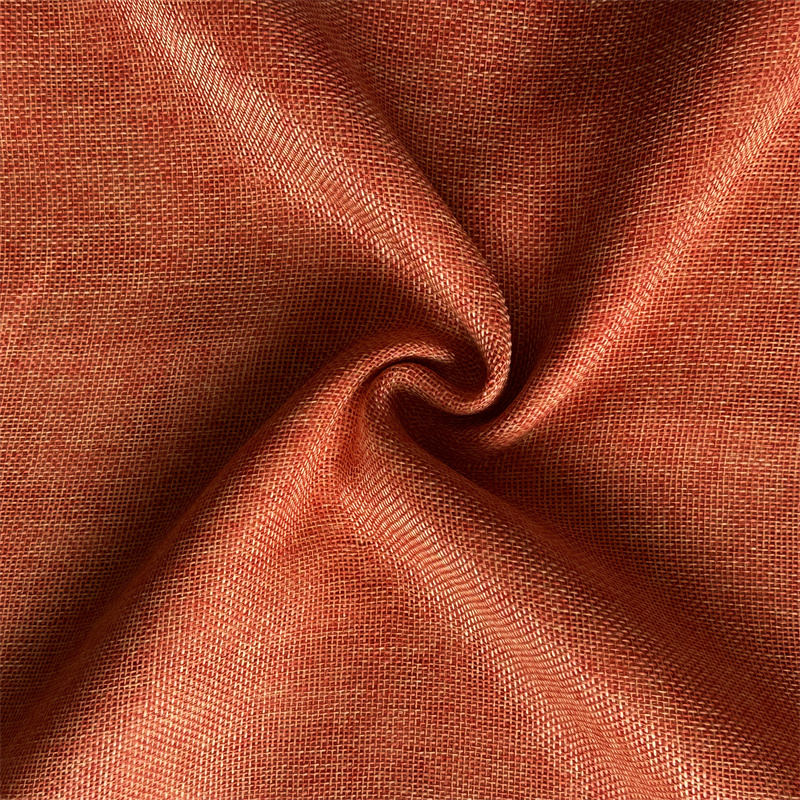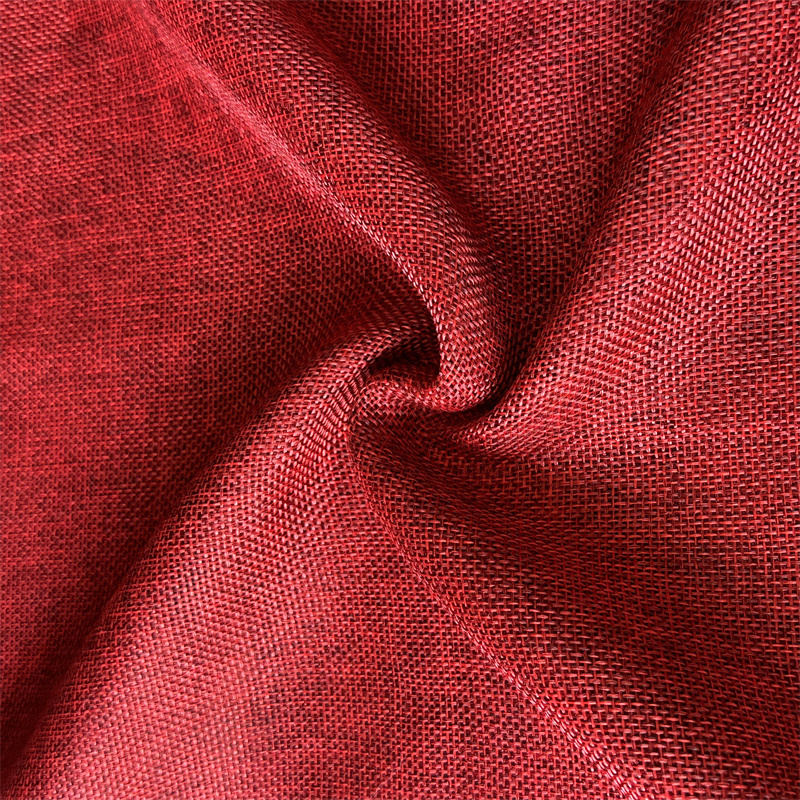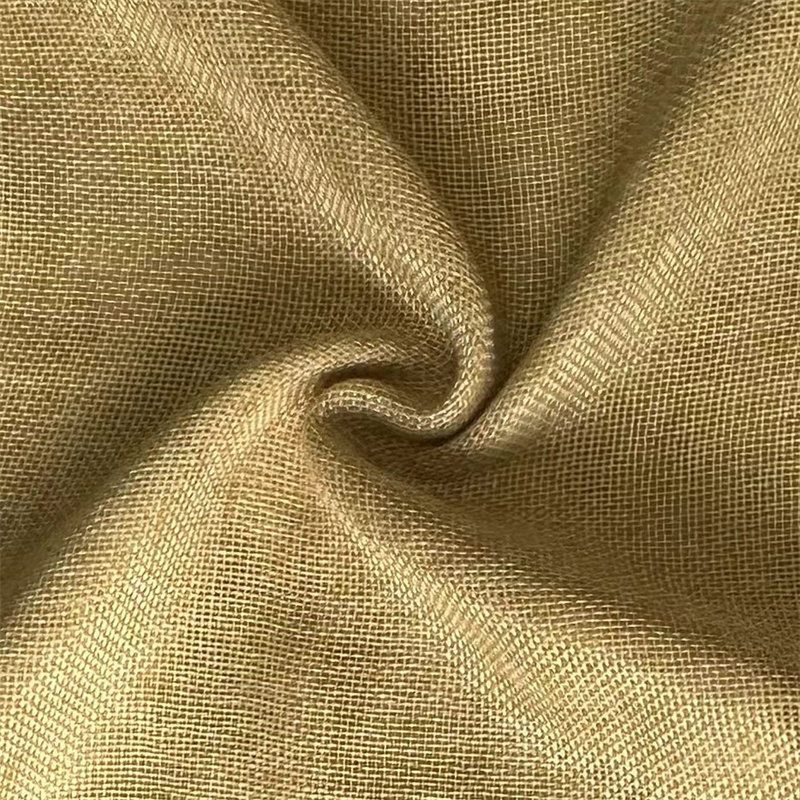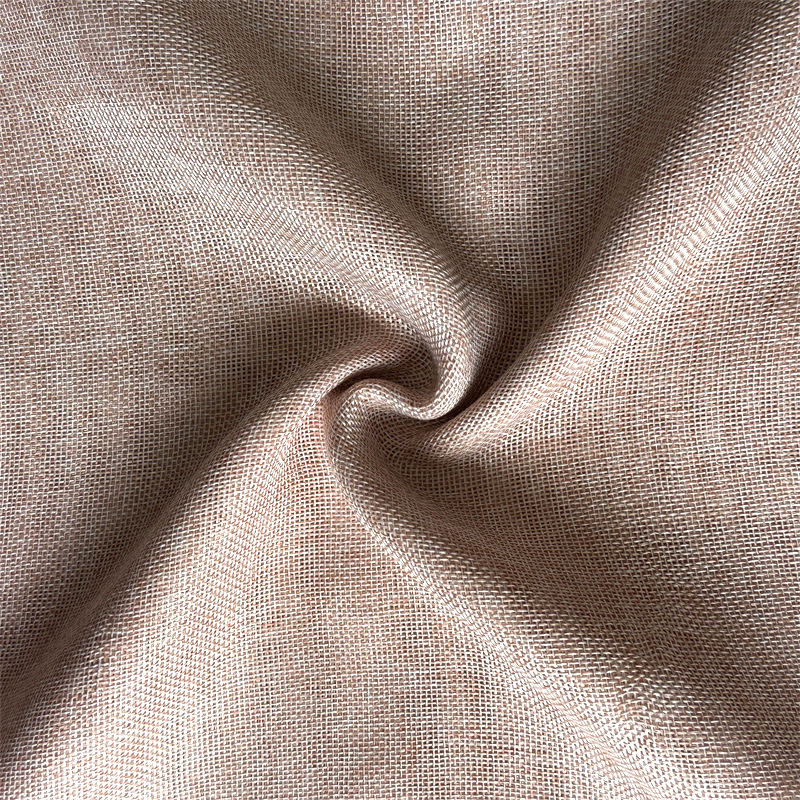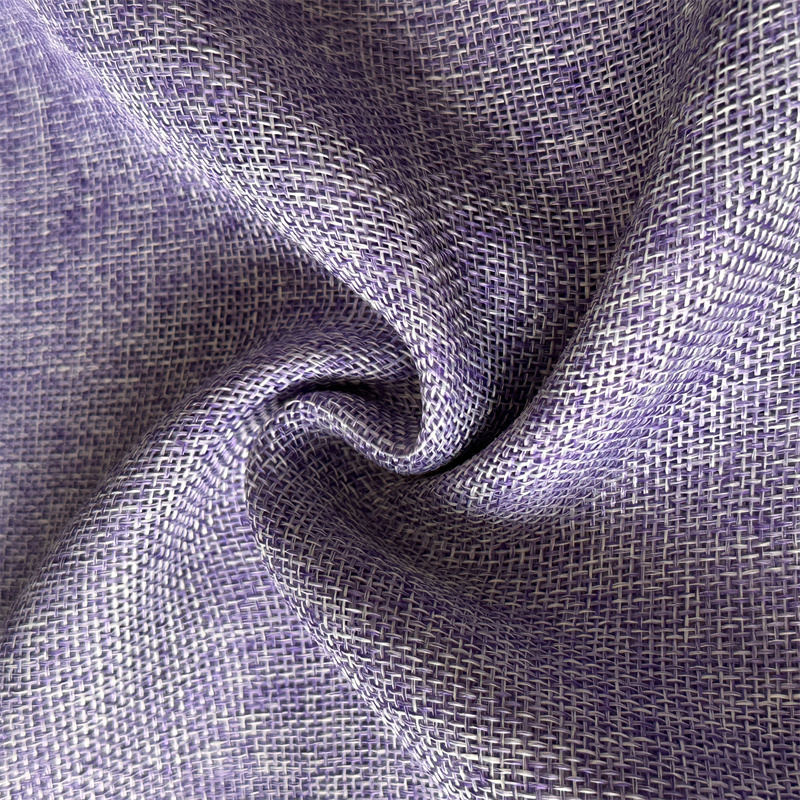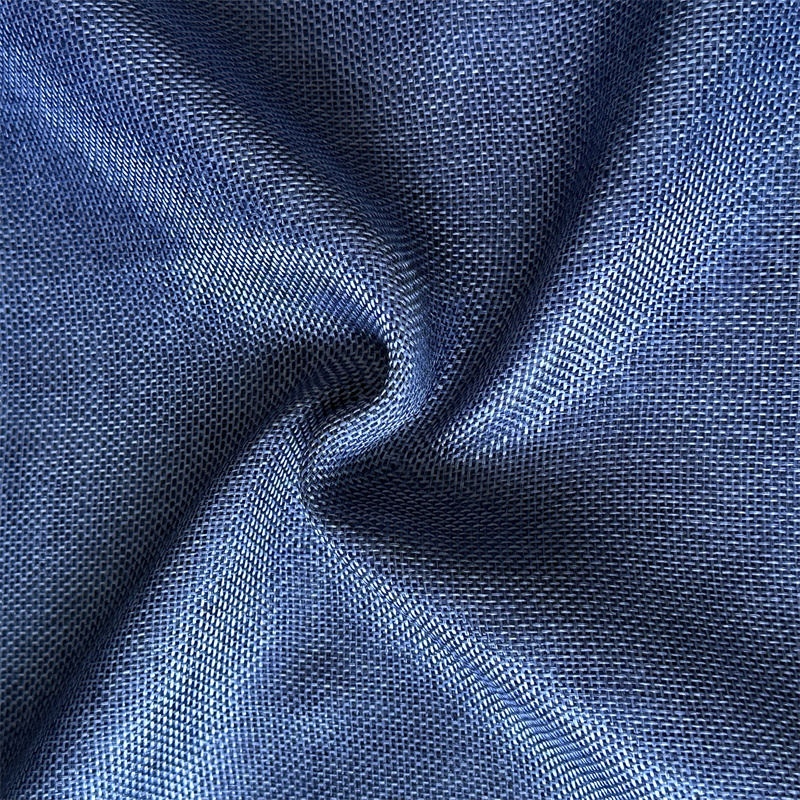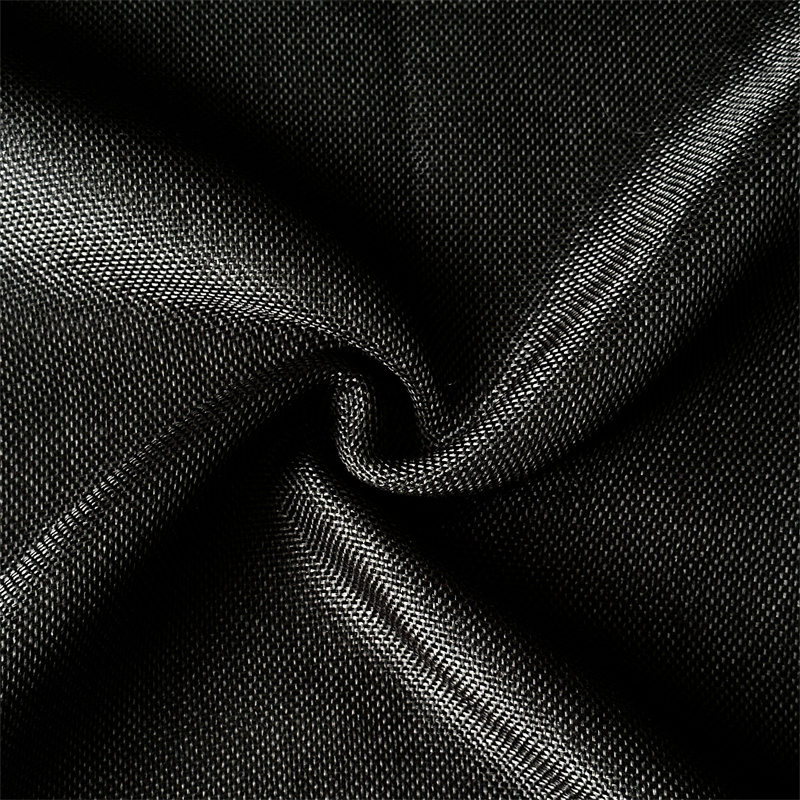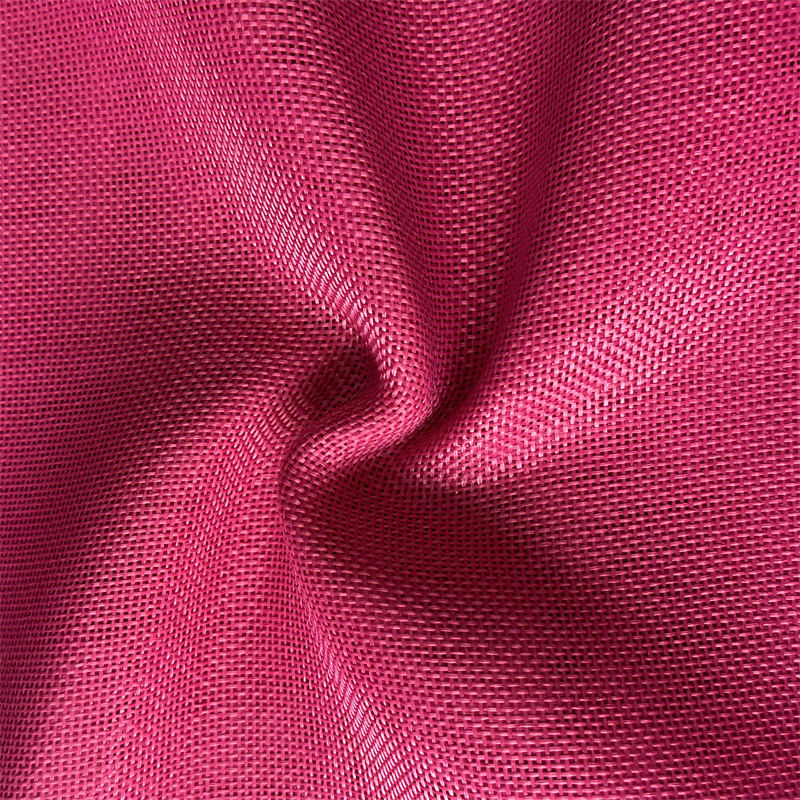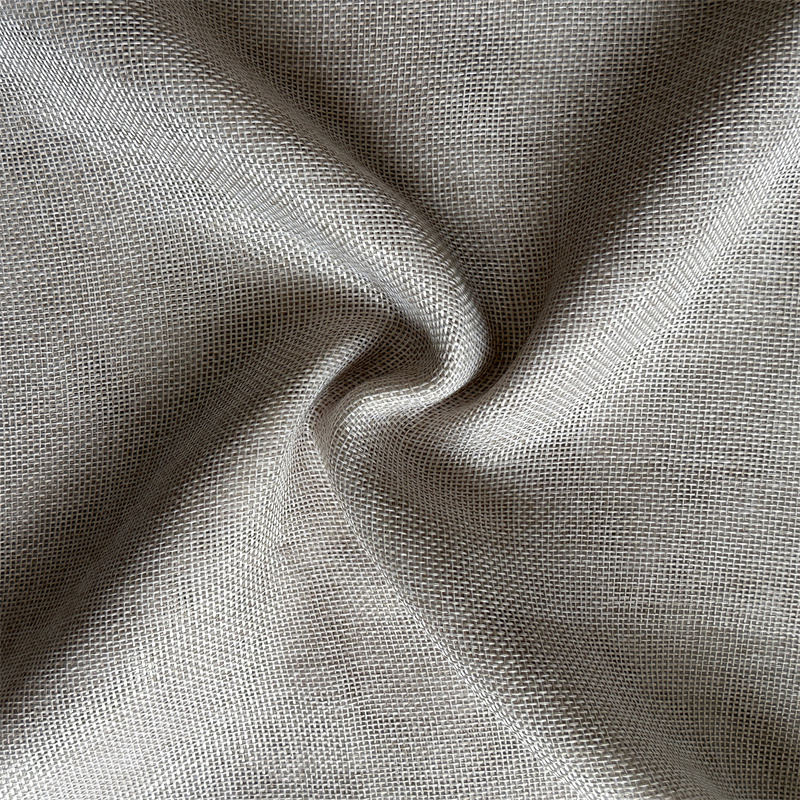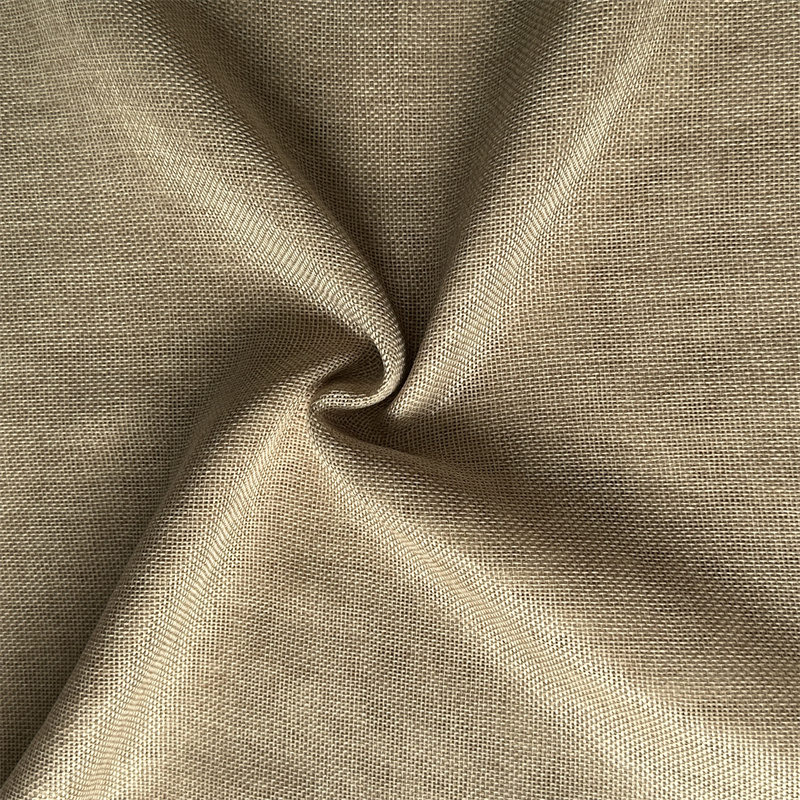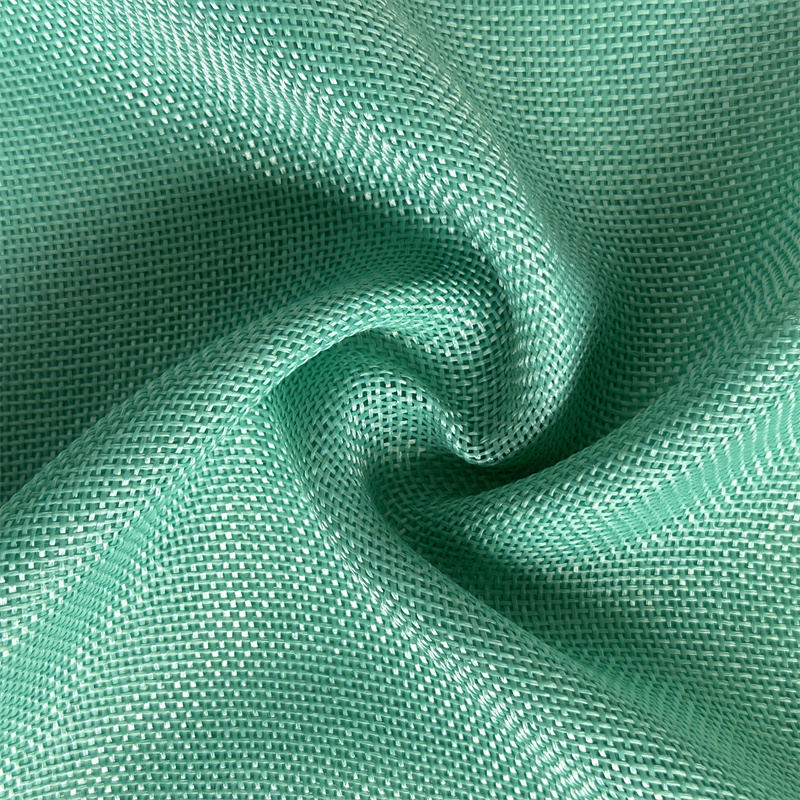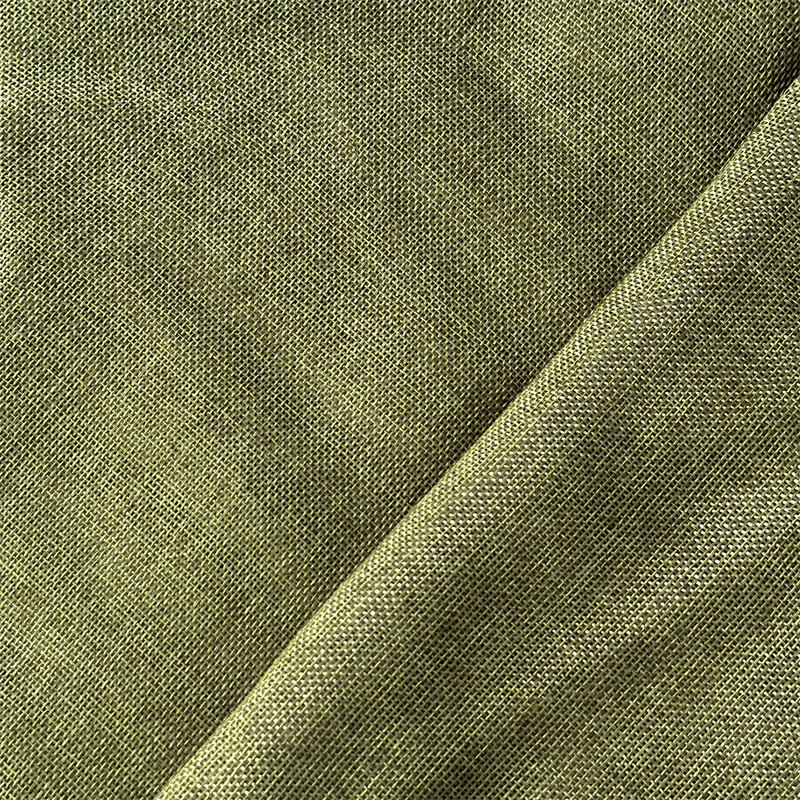Plaid polyester linen fabric has become a staple material in both fashion and interior design due to its distinctive texture, versatile appearance, and practical characteristics. By combining the natural elegance of linen with the synthetic strength of polyester, this fabric offers a balance of aesthetics, durability, and ease of maintenance that appeals to designers, manufacturers, and consumers alike. Its plaid patterns further enhance its visual appeal, adding classic, modern, or rustic touches depending on the color palette and weave design. This article explores the factors that make plaid polyester linen fabric durable, easy to maintain, and a preferred choice for various applications, from clothing to home textiles.
1. Understanding Plaid Polyester Linen Fabric
Plaid polyester linen fabric is a blended textile that combines natural linen fibers with synthetic polyester fibers. Each component contributes unique qualities to the finished fabric:
-
Linen: Derived from the flax plant, linen is renowned for its breathability, natural luster, and strength. It has been used for centuries in apparel and home furnishings for its comfort and aesthetic appeal. However, pure linen can wrinkle easily and requires careful maintenance.
-
Polyester: Polyester is a synthetic fiber known for its durability, resistance to shrinking, and color retention. It enhances the structural integrity of blended fabrics, making them more resilient to daily wear and washing.
-
Plaid Patterns: The plaid design involves intersecting horizontal and vertical lines, creating a grid or checkered effect. This classic pattern adds visual interest and versatility to both apparel and home textiles. The design can range from subtle, muted checks to bold, vibrant patterns, suiting different style preferences.
By blending polyester with linen, manufacturers create a fabric that combines the natural comfort and elegance of linen with the strength and low-maintenance properties of polyester, producing a fabric well-suited for modern lifestyles.
2. Durability Factors of Plaid Polyester Linen Fabric
Durability is a key reason why plaid polyester linen fabric is widely used in garments, upholstery, and other textile applications. Several factors contribute to its resilience:
a. Fiber Strength and Blend Composition
The combination of polyester and linen fibers creates a synergistic effect:
- Linen provides natural tensile strength, allowing the fabric to withstand pulling and stretching without tearing.
- Polyester enhances resistance to abrasion and deformation, ensuring the fabric maintains its shape even after repeated use.
- A balanced blend typically ranges from 50% polyester and 50% linen to 65% polyester and 35% linen, allowing the fabric to retain the desirable properties of both fibers.
b. Resistance to Wrinkling and Shrinkage
Pure linen is prone to wrinkling and shrinking after washing. The addition of polyester reduces these issues significantly:
- Polyester fibers maintain fabric stability, limiting the formation of deep wrinkles.
- Blended fabrics shrink less than pure linen, preserving garment or textile dimensions over time.
c. Colorfastness and Pattern Longevity
Polyester’s synthetic properties allow dyes to bind more effectively, enhancing color retention. This is particularly important for plaid patterns, which rely on crisp, contrasting lines:
- The blend ensures that plaid lines remain distinct after multiple washes.
- Fading is minimized, which is especially beneficial for fabrics exposed to sunlight or frequent cleaning.
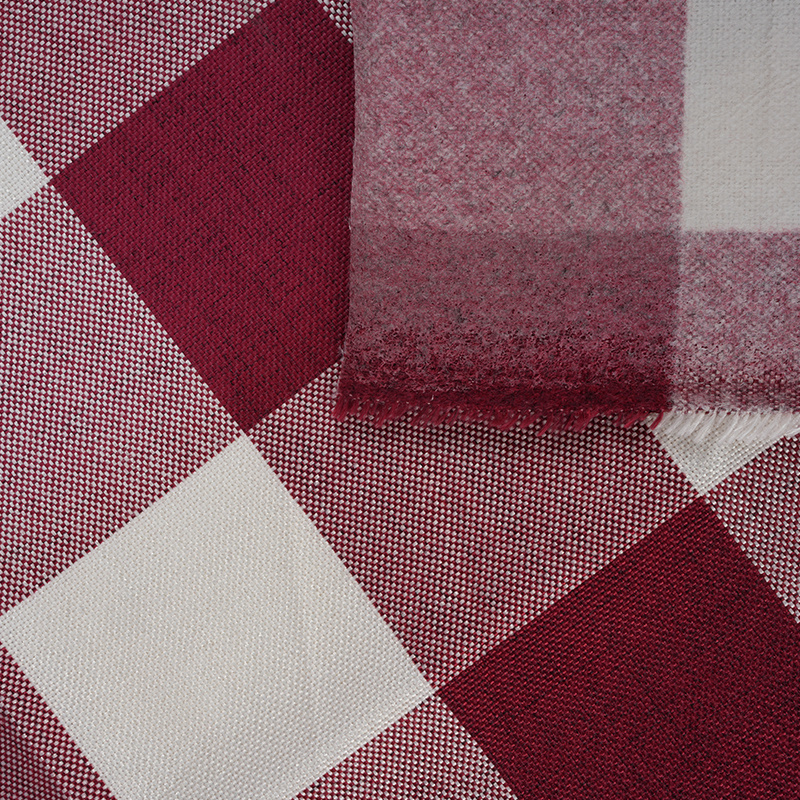
d. Abrasion and Wear Resistance
The presence of polyester fibers increases resistance to friction and surface wear, making the fabric suitable for high-traffic applications such as:
- Upholstery for chairs, sofas, and cushions.
- Table linens and placemats.
- Garments that require frequent washing or daily wear, including shirts, skirts, and jackets.
3. Ease of Maintenance
Plaid polyester linen fabric is designed to suit modern, low-maintenance lifestyles. Its ease of care makes it an attractive choice for both consumers and manufacturers:
a. Machine Washable
Unlike pure linen, which often requires delicate washing or professional laundering, polyester linen blends can generally be machine washed:
- Use of mild detergents and cold to warm water preserves the integrity of the fibers.
- Fabric is less prone to shrinkage, allowing it to retain its size and shape after washing.
b. Quick Drying
Polyester fibers absorb minimal water compared to linen, reducing drying time:
- Faster drying makes laundering more convenient.
- Reduced drying time also limits exposure to moisture, decreasing the risk of mold or mildew formation.
c. Reduced Ironing Requirements
Wrinkles are less prominent in blended fabrics due to polyester’s natural resistance to creasing:
- Many garments made from plaid polyester linen can be worn directly after washing or minimal steaming.
- This feature is particularly useful for home décor items, such as curtains or tablecloths, where ironing large surfaces can be labor-intensive.
d. Stain and Fade Resistance
Polyester contributes to resistance against common stains and fading:
- Food, beverage, or dirt spills are easier to clean, which is especially valuable for home textiles.
- Colorfastness ensures that vibrant plaid patterns do not dull over time, maintaining the fabric’s aesthetic appeal.
4. Versatility in Fashion and Home Decor
The durability and ease of maintenance of plaid polyester linen fabric make it highly versatile across industries.
a. Apparel Applications
The fabric is widely used in fashion for garments that require a balance of style and practicality:
- Shirts and Blouses: Lightweight, breathable, and wrinkle-resistant, suitable for casual and office wear.
- Skirts and Dresses: Drapes well, maintaining the plaid pattern’s alignment and sharpness.
- Jackets and Coats: Provides structural stability while remaining comfortable against the skin.
b. Home Textiles
In interior design, plaid polyester linen blends are favored for items that experience daily wear:
- Curtains and Drapes: Durable, fade-resistant, and easy to wash or steam.
- Upholstery: Resistant to abrasion, maintaining appearance even under frequent use.
- Table Linens: Retains shape, color, and pattern despite spills and repeated washing.
c. Accessories
Smaller items such as scarves, tote bags, and pillow covers also benefit from the combination of durability, pattern clarity, and ease of care.
5. Sustainability Considerations
While polyester is a synthetic fiber, combining it with natural linen can enhance the overall sustainability of the product:
- Reduced washing and ironing requirements lower energy consumption.
- Longer-lasting fabrics reduce the frequency of replacement, decreasing textile waste.
- Some manufacturers incorporate recycled polyester fibers, further reducing environmental impact while maintaining fabric strength.
6. Design Flexibility
The plaid pattern itself adds versatility to design applications:
- Classic or Modern: Depending on color schemes and line thickness, plaid can evoke traditional elegance or contemporary style.
- Mix-and-Match: Works well with solid colors, other patterns, or textured fabrics for layered design aesthetics.
- Customization: Manufacturers can print, dye, or weave unique plaid patterns while maintaining durability and washability.
7. Conclusion
Plaid polyester linen fabric is celebrated for its durability, aesthetic versatility, and ease of maintenance. By blending the natural properties of linen with the strength and resilience of polyester, this fabric addresses many of the challenges associated with pure linen, including wrinkling, shrinkage, and abrasion. Its plaid patterns add timeless visual appeal, making it suitable for both fashion and home decor applications.
Key factors contributing to its durability include fiber strength, resistance to abrasion, shrinkage, and color retention, while its ease of maintenance is enhanced by machine washability, quick drying, reduced ironing requirements, and stain resistance. This combination of attributes makes plaid polyester linen fabric an ideal choice for designers, manufacturers, and consumers seeking practical, stylish, and long-lasting textile solutions.
Ultimately, plaid polyester linen fabric represents the perfect intersection of functionality, style, and modern convenience, cementing its place as a reliable and fashionable material for contemporary applications.


 中文简体
中文简体 Español
Español